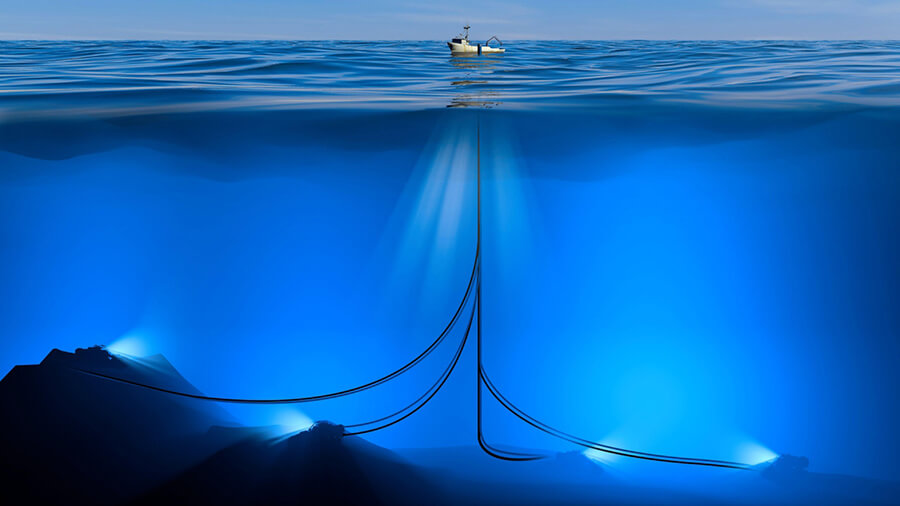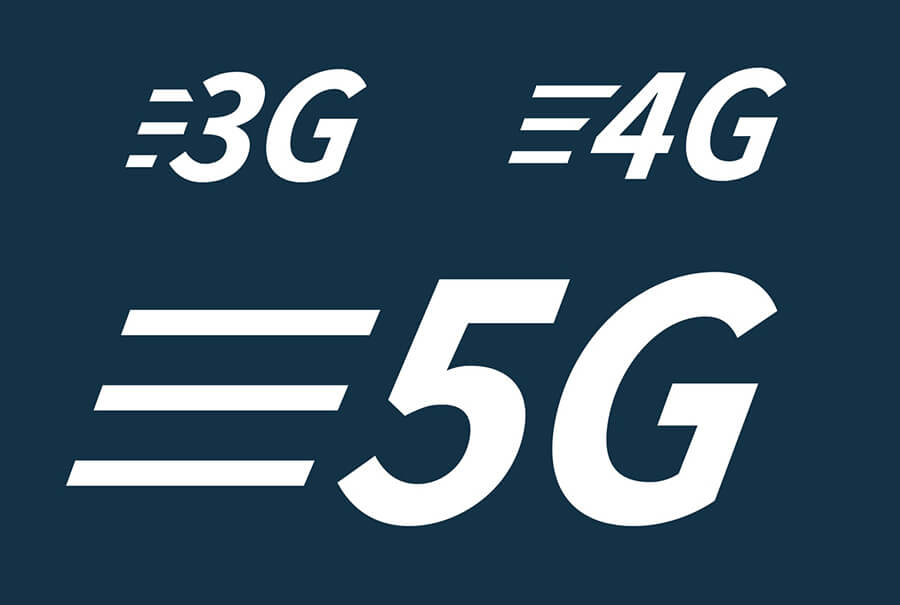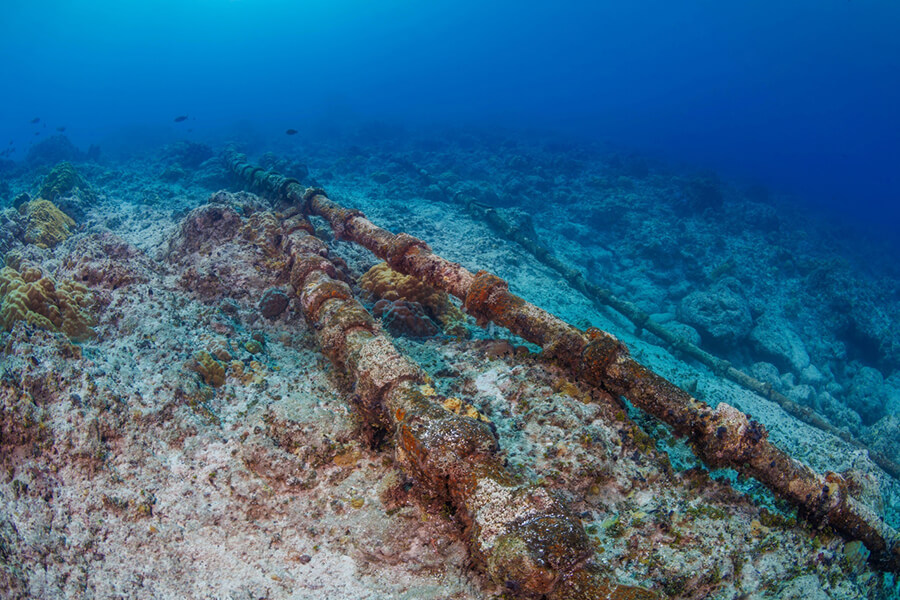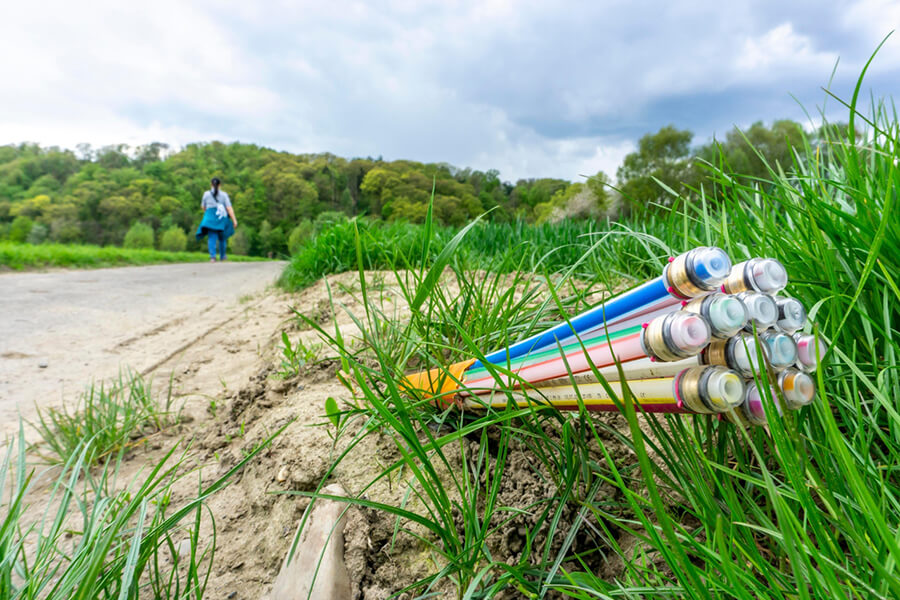Articles
Sample Articles from Bob Wallace.
Read More about Bob.
Harnessing DPUs & How DPUs are Changing Data Centers
- Details
- Published on 14 August 2024

Credit: Ruslan Kudrin / Alamy Stock Photo)
DPUs (data processing units) are gaining favor as they are extensively used to accelerate AI and ML workloads by offloading tasks such as neural network inference and training from CPUs and GPUs.
Change is a constant in the technology industry. The newest entity in town that is revamping data centers is the data processing unit (DPU).
Why? The DPU is at the core of a rearchitect of processing power where servers have expanded well beyond a central processing unit (CPU) to a series of specialty processors, each offloading a specific set of tasks so CPU can fly.
By offloading lifeblood data handling functions from central processor units (CPU), DPUs are driving a data center makeover that can cut the amount of electricity used for cooling by 30%, reducing the number of expensive servers needed while boosting performance.
Read more: Harnessing DPUs & How DPUs are Changing Data Centers
Hawaii Passes Law Preventing Controversial Deep-Sea Mining
- Details
- Published on 14 August 2024

(Credit: Naeblys / Alamy Stock Photo)
The law, which only covers three miles out from land, pits lawmakers against countries looking to divide the world's seabed through the Law of the Sea for mining that threatens the environment and subsea cable networks.
Opposition to deep seabed mining got a shot in the arm this week when Hawaii’s Governor Josh Green signed a bill into law prohibiting the mining, extraction, and the removal of minerals in the state’s waters. The issue is of note to IT managers, because while deep seabed mining could threaten the environment, it could also potentially impact subsea cables, and the subsea fiber optic communications network that the world relies upon.
The flashpoint issue comes as most countries have already signed onto the United Nations “Law of the Sea Treaty” designed to give signatories access to part of the world’s sea bottom for deep sea mining of metals. The U.S. has not signed the treaty despite strong interest dating back decades.
A grassroots organization drove the creation and approval of the bill, which notably only covers waters three miles out from Hawaiian shores.
“The Surfrider Foundation is grateful to see our Hawai’i state legislators step up and support the critical work needed to protect our deep-sea ecosystems. Senate Bill 2575 will provide crucial protection for Hawaii’s marine environment, fisheries, and tourism-related economy. The bill also sends a powerful global message about the importance of preventing the destructive practice of seabed mining,” said Lauren Blickley, Surfrider’s Hawaiʻi Regional Manager.
Related: Deep Seabed Mining a Threat to Global Subsea Cable Network Safety, Environment
The Surfrider Foundation is a nonprofit grassroots organization dedicated to the protection and enjoyment of our world’s ocean, waves, and beaches for all people through a powerful activist network. The group claims it has helped pass laws in Washington and California to ban seabed mining in state waters.
What’s seabed mining?
Seabed mining involves industrial-scale prospecting for metals and other minerals along the ocean floor. “Such activity can damage marine habitats that nurture commercially and recreationally important fish and other species,” explained Blickley. Seabed mining can also create sediment clouds in the water column that smother or negatively impact the feeding and reproduction of marine life, including plankton, groundfish, and forage fish. These sediment clouds and the associated noise of seabed mining can also harm whales, dolphins, and other marine mammals.
Is three miles enough?
Those interested in deep seabed mining have already identified mineral rich areas and in many cases, have already landed licenses from the global group to access the areas of their interest, which likely do not reach close to countries’ shorefronts. The United Nations has designated the International Seabed Authority to govern activities, but some claim they have only limited authority.
What is the Law of the Sea?
Those in favor of deep seabed mining, the 268 countries and the European Union, have been looking to open a subsea front for precious mineral access. Those countries, including China, have signed onto the United Nations Convention on the Law of the Sea (UNCLOS) treaty, which allows for the division of the international seabed.
U.S. Government Action Urged
The Surfriders group wants more and more far-reaching protections. “The time has come for the U.S. government to take a leadership role on the global stage by pushing for a moratorium on seabed mining in international waters until a suitable regulatory framework is established.”
Related articles:
Planning for 5G for International Business Expansion
- Details
- Published on 14 August 2024

(Credit: oxinoxi / Alamy Stock Vector)
What to do and avoid with older 2G and 3G wireless networks in the absence of 5G.
Although 5G wireless networks are available more widely around the globe to fuel business expansion, the patchwork of availability presents challenges for companies seeking a simple approach.
In the U.S., 5G is offered by the top service providers, and their 2G and 3G predecessors have been shut down. However, this scenario is largely limited to areas in Canada, China, Japan, the U.K., Germany, India, Saudi Arabia, and South Africa.
The reality for U.S. and foreign firms looking to expand internationally is that much of the rest of the world is playing catchup with 5G and are advancing at different speeds. Some regions in Africa, South America and eastern Europe are hamstrung by having to divert money, spectrum, and other resources to keep old but crucial 2G and 3G networks running to support IoT devices, and more.
GSMA Intelligence has this month released a downloadable chart that looks at the 5G process and “look at the relationship between 5G network launches and the shutting down of 2G/3G networks.,” according to author Radhika Gupta of the wireless association. Where 2G and 3G wireless networks are the best options, organizations will need to consider the following challenges and possible steps, according to Susie Siouti, Chief Commercial Officer for SmartViser, a maker of test automation offerings for Mobile Network Operators, regulators, device manufacturers, and enterprises.
Waiting for 5G, the top 7 recommendations
Here are seven ideas on how to get by until 5G becomes available.
- Limit or halt videoconferencing as it requires significant bandwidth to function properly and provide an acceptable QoS.
- Optimize products for lower bandwidth if possible. “Optimize apps and websites to function smoothly on lower bandwidth networks,” says Siouti. “This involves minimizing large images and implementing data compression.”
- Consider OTT apps, such as WhatsApp, Viber, etc., for voice communications.
- Remember, 2G and 3G lack sufficient wireless security features and functionality found with higher speeds networks. Older network technologies like 2G and 3G have more vulnerabilities, increasing data security risks.
- Look for help beyond wireless. Consider hybrid connectivity solutions such as satellite or private networks to supplement the available infrastructure.
- Local Partnerships: Partner with local businesses to leverage their existing networks and resources. “Some businesses may find it beneficial to partner with a local telecom company to help upgrade the infrastructure or even invest in some private network setups," added Siouti.
- For larger-scale projects, these partners can help them financially, and they can get preferential service.
Prepping for 5G: 7 steps
Finding talent
For companies without staff (or consultants) skilled in the challenges of handling wireless communications outside the 50 states, it may help to have an expert in logistics, supply chains, and disaster recovery, which are developed in the armed forces. You might seek individuals (local and in the U.S.) with experience in the regions you plan to enter to understand the evolving nature of the available wireless networks, satellite options, and support for voice.
Timelines
What do they have now, and what's their timeline for transitioning to higher-speed wireless networks? If a telco still operates older wireless networks (2G and 3G), be wary that this is costly and requires precious spectrum needed to advance 4G and 5G. Sizable regions of continents, such as Africa, still rely on 2G networks. Here, older networks support IoT devices and far-flung sensors on pipelines, utilities locations, alarm systems, and agriculture devices.
Funding
Check operators' capex spending plans. And is there competition among operators in markets? It can drive investment in 5G and other technologies as opposed to a monopoly or duopoly scenario.
And then in some cases, such as the U.S., funding is available from certain government agencies. With the top three operators offering 5G and having already shut down 2G and 3G to help enable the transition, the FCC recently announced a $9 billion fund specifically targeted at extending 5G to rural and other underserved areas.
Regulatory
You must determine how involved regulators are in the advancement of 5G. Claiming a handful of large US tech companies are accounting for a disproportional amount of their network bandwidth, a large group of European operators pushed a plan called Fair Share, to drive broadband expansion on the continent. The plan was discussed and debated at length before regulators put it on ice. It’s unclear if the EU will meet its decade end broadband availability goal.
Hit the maps
As history has shown with new wireless network services, the first areas to get turned up are typically urban areas, business hubs, and along the transportation routes that connect them. Rural areas often come much later. Check operator maps to gain insight into whether they are a match with your business expansion plans.
Geopolitical issues, discord
Where aren't there geopolitical issues today? There's Eastern Europe, the Middle East, Central Asia, and the South China Sea between China and Taiwan. Many countries in Africa are embroiled in ongoing conflict as groups fight for control.
At their best, expect supply chains to be disrupted and difficult to rework due to armed conflict.
Related articles:
Deep Seabed Mining a Threat to Global Subsea Cable Network Safety, Environment
- Details
- Published on 13 July 2024

(Credit David Fleetham / Alamy Stock Photo)
United Nations Convention on Law of the Sea (UNCLOS) Treaty, which the U.S. has not joined, provides structure for access to valuable minerals. Such mining, if not conducted properly, can damage subsea cables and the environment.
A controversial global treaty which will enable signees to vote for rights to deep seabed mining, carries environmental, economic, geopolitical and telecommunications implications for the use of the sea floor.
Looking to open a subsea front for precious mineral access, 168 countries, including China, have signed onto the United Nations Convention on the Law of the Sea (UNCLOS) treaty, which allows for the division of the international seabed.
Crafting environmental rules
The United States, whose strong interest in the historic treaty, has not yet joined the global group. If the conservative Heritage Group continues blocking a senate approval over the terms of numerous presidents, the U.S. will not have a vote in crafting approving bids and environmental rules for seabed mining, leaving China as the power at the newly created International Seabed Authority.
"We are conceding," John Negroponte, a former National Intelligence director in the Bush administration, told CBS 60 Minutes. "If we're not at the table and we're not members of the Seabed Authority, we're not going to have a voice in writing the environmental guidelines for deep seabed mining. Well, who would you prefer to see writing those guidelines? The People's Republic of China or the United States of America?"
What is the buried treasure?
What is driving the U.N. Law of the Sea Treaty is access to the seabed to begin mining next year for vast amounts of minerals on and beneath the ocean floor. This will be handled by the International Seabed Authority (ISA), an autonomous international organization created under UNCLOS.
As of 18 May 2023, ISA has 169 members, including 168 member states and the European Union. Valued minerals can include rocks which include cobalt, copper, manganese, and nickel, according to the 60 Minutes report.
When and who?
No deep seabed mining operations have started anywhere in the world, according to the ISA. “Current exploration activities undertaken in the seabed area are aimed at gathering the necessary information on the location and quality of the seabed minerals and collecting all the necessary environmental information.”
To date, ISA claims it has approved thirty contracts for exploration involving twenty-two countries and covering more than 1.3 million square kilometers of the seabed.
- Twelve are sponsored by developing countries.
- Thirteen countries and one intergovernmental consortium currently have contracts for the exploration of polymetallic nodules.
- Seven countries have contracts for the exploration of polymetallic sulfides.
- Five have contracts for the exploration of cobalt-rich ferromanganese crusts.
The treaty was created to avert an undersea rerun of the U.S. Gold Rush and included support for the naval resources needed on the surface. Splitting up the seabed between the signatory countries, without the U.S., would seem to create challenges for military presence in a world flush with geopolitical hot spots. The list includes the narrow space between China and Taiwan, the shipping lanes of the Red Sea, and the war zone in the Middle East between Israel and Palestine.
Subsea cable construction forecast
Will the beginning of seabed mining have an adverse impact on the building of subsea cables? Many recent and planned systems have been in the works for years.
Between 2023 and 2025, a new cable boom valued at a record $10 billion will bring an estimated seventy-eight systems online measuring over 300,000 kilometers in length, a level of growth not seen in over 20 years. That is according to a blog by Telegeography, a global telecom market research firm. The group has released its 2024 world submarine cable map.
What becomes of subsea cables – current and planned?
Subsea fiber optic cables are lifelines that typically lay atop the seabed to support lifeblood data communications between hubs on almost all continents. They needed to be maintained and repaired when damaged or severed, which has seemingly become more frequent.
Protecting the health of this network of subsea cables has become paramount because other services, such as satellite and wireless, cannot match the capacity and speed and are, therefore, relegated to short-term, but only partial, backup options.
Will an anticipated increase in ocean bottom activity and supporting shifts and equipment threaten the safe and continued operation of subsea cables? The risk of damage would seem heightened considerably because, at present, faults are mostly due to accidental human activities such as fishing and anchoring. Deep sea mining is a largely new and potentially profitable activity that could transform sea floors and surrounding waters into commerce areas.
The big picture
The global submarine cable network of more than four hundred cable systems and 1.5 million kilometers of submarine cables crosses the oceans worldwide, according to the International Cable Protection Committee (ICPC), which promotes submarine cable protection and resilience. “This network underpins our daily lives, carrying more than 99% of all digital data traffic worldwide, including the Internet,” the group added.
The global group recommends countries provide security for repair ships and crews used to repair today’s variety of subsea cable damage and cuts. The ICPC’s 215 member firms from seventy countries build, operate, and maintain submarine telecommunications and power cable infrastructure.
The importance of protecting subsea cables has increased of late, creating a myriad of problems for users. Repairs on two out of three cables cut in the Red Sea off Yemen in early February began in May, while work on the third has been delayed with no time to repair interval provided. The continuation of armed conflict in the area has delayed permitting for the repairs and forced users of the cables to scramble for rerouting of crucial traffic over diverse paths on unaffected cables in the busy region.
Asked whether subsea cables will be impacted by seabed mining due to start next year, the ICPC replied. “Uncoordinated deep seabed mining poses risks of damage to submarine cables and foreclosure of diverse routes used to strengthen resilience of submarine cable networks,” explained Kent Bressie, International Law Adviser, ICPC, and Partner, HWG LLP.
The ICPC and its members have been working with states, the International Seabed Authority, and mining contractors to mitigate these risks through the adoption and implementation of effective regulations for mining contractors and direct coordination between submarine cable operators and mining contractors.
A spokesperson for Telegeography said the firm is unable to assist in addressing the question.
Exploration drives environmental concerns
Extensive exploration is already going on pursuant to the exploration contracts, explains Bressie. "The submarine cable industry worries about that, as even exploration can damage cables if it is not coordinated sufficiently. And, of course, there are significant concerns about the environmental impact of any deep seabed mining activities."
Users of the subsea cables are expected to see an increase in costs from operators of the link as the cost of insuring them is increasing, as is the cost of repairs resulting from the sizable delay in the ability to get clearance to get to work as is the case in the Red Sea, which is going on for four months now. Route diversity is crucial but not yet widely available.
Related articles:
- Geopolitics and Climate Change Heighten Undersea Cable Concerns
- The Critical Infrastructure Beneath the Sea: What Risks Make Your Business Vulnerable?
Africa Battles Wave of Subsea Cable Breaks
- Details
- Published on 13 July 2024

(Credit Julian Dragamir / Alamy Stock Photo)
The continent's operators struggle to provide businesses network resiliency for the much-needed economic growth of African nations.
Doing business in Africa has become tougher thanks to recent subsea cable cuts off South Africa, western Africa in April, and the numerous cable cuts in the Red Sea in February, with repair on the last group yet to conclude.
Africa is home to endless national resources, with terrain from the Sahara Desert to deep jungles and Mt. Kilimanjaro. But the continent’s communications options are fragile and limited, with backups such as satellite and wireless insufficient for high volumes of traffic.
The number and impact of the subsea cable cuts underscore the fragile nature of Africa's telecom options, not just multinational businesses in the continent, foreign businesses considering expanding to the continent, and African countries looking to attract economic investment globally.
The cost of subsea cable failures can be substantial, with repairs costing up to $6 million on average and taking around 13 days to complete. Additionally, the cost of cable repairs in bad weather can escalate to upwards of 200,00 Euros per day, emphasizing the need for a focus on the long-term reliability of subsea circuits.
Recent outages: West Africa
An update from theWIOCC, a wholesaler carrier that delivers high-capacity connectivity between Africa and the rest of the world, said 35 networks across West African countries, Nigeria inclusive, have been restored to full capacity resilience, adding that it will take another four weeks to fully restore internet services to all network operators that are connected to the affected four submarine cables that came from Europe, with landing points along the West African coast.
WIOCC has access to vast terrestrial fiber and subsea cable networks. The carriers’ carrier offers cloud operators, content providers, fixed and mobile telcos, ISPs, and other operators reliable, seamless, high-capacity connectivity between more than 30 African countries and key global financial and commercial centers.
The WIOCC head estimated it will cost a total of about $2 million to achieve full restoration to a single subsea cable, depending on the extent of the cut on the cable.
Commissioned studies show that new cable landings can be a catalyst for change. Decreases in broadband prices and increases in broadband penetration rates often translate into economic growth for the surrounding population that benefits individuals and businesses.
RTI International, an independent nonprofit research institute, reports that 2Africa will improve Africa's GDP by up to 0.58 percent, equivalent to about $36.9 billion within the first two to three years of operations. The company emphasizes this is “a very conservative estimate since more countries have been added to the cable design since the study was published.”
With the situation approaching a breaking point, the telco for a small island nation vacation destination and financial services user off southeast Africa was victimized by a cable outage that cut its internet connection. Mauritius reported business interruptions as ATMs, banks and hotels for hours were without Internet access. Now, it has taken action that could eventually help the region in the future.
Mauritius Telecom CEO Kapil Reesaul has brought together providers Reliance, Jio, Infocomm, and Orange for a new undersea cable linking Africa, Indian Ocean islands, and Asia, improving redundancy in regions hit by breakdowns.
Good news, bad news, plan
2Africa: In 2020, a consortium-driven subsea cable named 2Africa was announced and expected to be online by late last year. It practically encircled the continent, promising to provide higher-speed service and advanced technology.
Equiano: A new subsea cable driven by Google connects Europe with Western African countries through Portugal. Part of the allure is the ability to handle route diversity with other cables. It also boasts advanced optical technologies and far higher speeds of 800G.
T-4: The route will be built to link Africa with the Indian Ocean and Asia. However, it is replacing a current cable, dubbed Safe Africa Far East (SAFE), which is due to be retired in 2027 after 25 years of service. The cable will have a thousand times more capacity than SAFE, the telco CEO claimed.
While new and planned subsea cables will bring benefits to customers, planning for a major cable retirement, transitioning data, and locating sorely needed route diversity will require research and planning for starters.
“With so many cable breakdowns we are having, we want to secure the Far East with a cable that will run from Mauritius to India and Singapore,” the island telco’s CEO said in a recent interview.
The bottom line on subsea cables
Africa has long been viewed as mysterious and largely unexplored. Nowadays, the mystery is how businesses around the world -and on the continent -can overcome challenges to forge reliable and resilient network links to brighten commerce opportunities.
Related articles:
Rural Broadband Program Woes Hindering Service Deployment
- Details
- Published on 13 July 2024

(Credit Jochen Tack / Alamy Stock Photo)
Network planners can learn from the defaults, discord, and debate that followed the beginning of the FCC Rural Digital Opportunity Fund (RDOF) disbursements.
Network planners and business expanders hoped the $20 billion FCC- administered RDOF would help close the digital divide. Below is a list of issues for these teams to consider as the program has underwhelmed.
The two-phase reverse auction effort launched in 2020 with a charter to deliver broadband to un- and under-served rural locations that could join the national economy as home workers, branch offices, and new business sites.
Now, nearly one-third of the money awarded through RDOF Phase 1 ($9.2 billion) has been defaulted on, leaving those in many census blocks with no definite help in sight. The FCC would not say when Phase 2 will begin.
The ISPs continue to default, with many thinking they can simply grab funds from the BEAD program, but that is unlikely as most states have already chosen providers that will deliver broadband, and defaulters have been assessed fines.
Enterprise impact
“For enterprises looking to expand service in areas designated as unserved or underserved, this all means they won’t be getting appropriate broadband service in a reasonable amount of time,” explained Jeff Heynen, Director, Broadband Access and Home Networking for Dell’Oro Group, a telecom market research and consulting firm. “They have to continue to look for contingencies.”
What is the RDOF?
The RDOF will disburse up to $20.4 billion over ten years to bring fixed broadband and voice service to millions of unserved homes and small businesses in rural America. RDOF uses a two-phase, competitive reverse auction "that prioritizes higher network speeds and lower latency," according to the FCC. Phase II will cover locations in census blocks that are partially served, as well as locations not funded in Phase I.
The RDOF Phase I Auction ended on Nov. 25, 2020, and awarded $9.2 billion in support to 180 winning bidders. RDOF (Phases 1 and 2) was originally budgeted for $20 billion, but it is unclear if or when the remaining funds (and defaulted amounts for Phase 1) will be made available. When asked, an FCC spokesperson declined to comment.
Shortly after the awards, ISP top recipients started to drop out/default, leaving countless census blocks in the lurch. Some were for internal financial issues (Starry) and more (LTD Broadband and Elon Musk's SpaceX) for other reasons. These three accounted for nearly a third of the $9 billion awarded by the RDOF. Just last month, Altice USA defaulted on RDOF funding, betting that the census blocks would be included in BEAD. Charter Communications has done the best job providing broadband at volume under the RDOF, claimed Heynen.
What are enterprises to do?
For enterprises, especially those looking to expand service in areas designated as unserved or underserved, this all means they will not be getting appropriate broadband service in a reasonable amount of time, according to Heynen.
Check with providers. Are any providers planning to expand their networks using their own capital? That way ISPs are not beholden to some requirements of each program.
Have a plan B. Enterprises must continue to look for contingencies—including fixed wireless—as a stopgap until the wired services become available. Another feasible option is low-earth orbit satellites. Look into home and business options.
The RDOF defaults are frustrating, for sure. But they are only going to increase as operators bow out and re-submit the projects for inclusion in the BEAD process. “RDOF is turning out to be a bit of a bust,” said Heynen.
BEAD is more attractive, especially with the benefit of better mapping and matching funds by the providers themselves to show they have some skin in the game. The FCC plans to use a reverse auction for disbursing $9 billion from the 5G Fund, which was created to drive deployment of 5G service in rural areas.
Keep in mind that there are overlapping broadband programs. With several overlapping programs, assume there will be confusion as they are typically run by different government agencies that use differing approaches to incenting ISP to cover un and underserved areas.
Balance the pros (time) and cons (cost) of the DIY approach. Funding programs can take years from introduction to delivering funds. If your business needs cannot wait, or the timelines do not match, waiting for government funding to get to ISPs will be the hardest part.
A final word on reverse auctions
"It is highly unlikely that another reverse auction process like the one used for RDOF will ever be done again," predicted Heynen. "Providers used their marketing speeds—not the actual speeds they delivered—to leave millions of locations that could not get 25/3 out of the process. Until coordination was handed to the individual states, like it is in BEAD, RDOF was going to have a challenging time succeeding. And with it, millions of homes and businesses are struggling to get anywhere near the 25/3 threshold."
